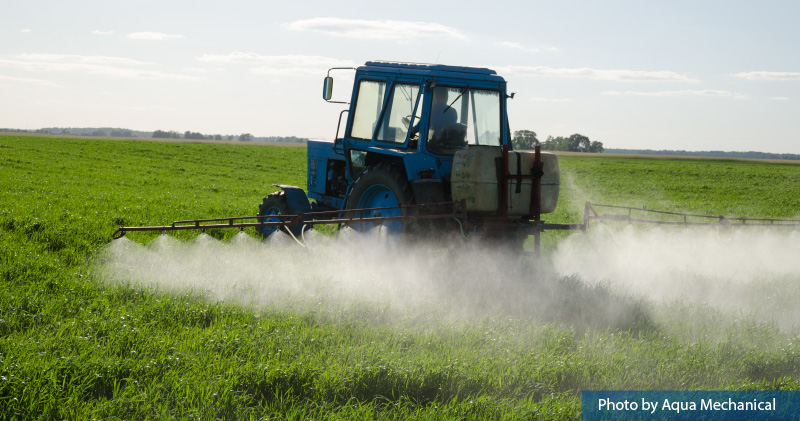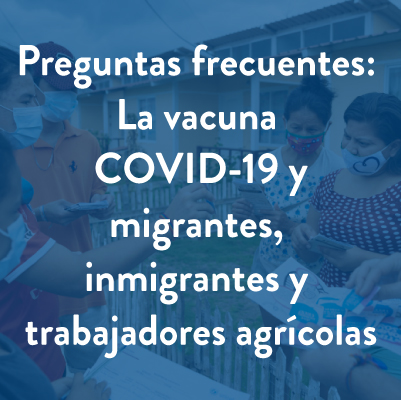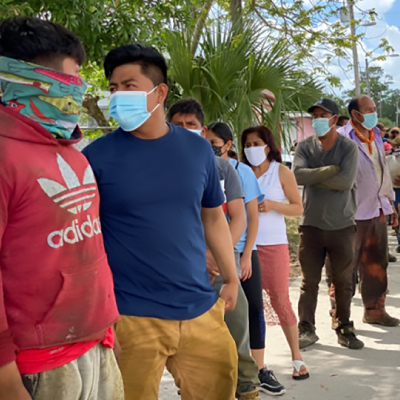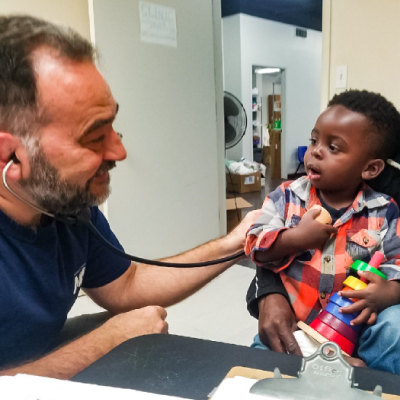- Who We Are
- Clinician Employment
- Publications
- Witness to Witness (W2W)
- El Premio Kugel & Zuroweste a la Justicia en la Salud
- Your Voice Matters: Photovoice Project
Thu, 11/05/2020 | by MCN Admin


Last week, the Environmental Protection Agency (EPA) rolled back a critical safeguard for farmworker health: the application exclusion zone, or AEZ. The AEZ is an important part of the Worker Protection Standard, preventing farmworkers from pesticide exposure by limiting how close workers and others could be during pesticide applications.
Last week, the Environmental Protection Agency (EPA) rolled back a critical safeguard for farmworker health: the application exclusion zone, or AEZ. The AEZ is an important part of the Worker Protection Standard, preventing farmworkers from pesticide exposure by limiting how close workers and others could be during pesticide applications.
The previous rule required a pesticide applicator to cease spraying if someone is within 100 feet of the application, regardless of property boundaries. With the new AEZ rule, pesticide applicators only have to take into account people on the farm property being sprayed. Consequently, farms, homes, businesses, and schools at the boundary of a field will be at risk for pesticide exposure, threatening the health of farmworkers, their families, and rural communities. Additionally, the AEZ shrinks from 100 feet to 25 feet for certain ground applications of pesticides.
“Pesticides do not care about property lines, and pesticide drift is one of the most common causes of pesticide poisoning among farmworkers,” said Amy K. Liebman, Migrant Clinicians Network’s Director of Environmental and Occupational Health. “In its 2015 version of the WPS, EPA clearly documented such exposure and set out to offer stronger protections.”
Under the new rule, pesticide applicators have no enforceable obligation to ensure that bystanders on adjacent property won’t be sprayed, explained Liebman.
“In rural areas, kids are in schools and playgrounds adjacent to agriculture fields and they are extremely vulnerable to exposure from drift,” she said. “Children, along with farmworkers and their families, need more protection -- not less.” Additionally, the new rule allows people other than the pesticide applicator to be present in the AEZ during application, under certain circumstances. Such an allowance only increases the chance of pesticide exposure, as pesticide applicators no longer have clear lines as to whether a person should be in the AEZ or not.
Pesticide application techniques, including aerial spraying, are imprecise and susceptible to changing weather conditions. Even mild breezes can carry pesticides hundreds of feet. Acute and chronic exposures to pesticides are common in agricultural areas. Acute poisonings frequently result in emergency care; between 37 and 68 percent of pesticide illnesses among US farmworkers have been reported to be the result of pesticide drift, according to research from surveillance data from the National Institute for Occupational Health Safety and published in Environmental Health Perspectives. Additionally, regular exposures to pesticides may result in chronic health conditions for both farmworkers and rural community residents.
Pesticide Resources for Farmworkers and their Families
Aunque Cerca… Sano targets farmworker families to educate parents about children’s risks to pesticide exposure. Newly updated in 2020.
Lo Que Bien Empieza… Bien Acaba addresses pesticide exposure in women of reproductive age.
WPS training curriculum and resources
Culturally and linguistically appropriate training curriculum and supporting resources.
Clinical Resources
Recognition and Management of Pesticide Poisonings 6th Edition
An essential clinical reference for recognizing and managing pesticide overexposures.
Pesticide Reporting and Workers’ Compensation Map
This interactive map provides state-specific pesticide reporting requirements and contact information to facilitate reporting. It also includes state-specific Workers’ Compensation criteria and agencies responsible for enforcing the Worker Protection Standard.
Cholinesterase Testing Protocols for Healthcare Providers and Cholinesterase Testing Protocol Algorithm
These clinical tools provide a concise and simple guide for clinicians in managing care for patients working with Class I and Class II organophosphates (OP) and N-methyl-carbamates.
Acute Pesticide Exposures Clinical Guidelines
Important guidelines for health centers outlining how to handle acute pesticide exposures, emergencies and decontamination.
Pesticide Exposure Assessment
A user-friendly form and check list for data collection on the acute pesticide exposed patient.
EOH Screening Questions for the Primary Care Setting
Three screening questions in both English and Spanish to quickly ascertain work-related and environmental exposures and injuries.
Aunque Cerca… Sano targets farmworker families to educate parents about children’s risks to pesticide exposure. Newly updated in 2020.
Lo Que Bien Empieza… Bien Acaba addresses pesticide exposure in women of reproductive age.
WPS training curriculum and resources
Culturally and linguistically appropriate training curriculum and supporting resources.
Clinical Resources
Recognition and Management of Pesticide Poisonings 6th Edition
An essential clinical reference for recognizing and managing pesticide overexposures.
Pesticide Reporting and Workers’ Compensation Map
This interactive map provides state-specific pesticide reporting requirements and contact information to facilitate reporting. It also includes state-specific Workers’ Compensation criteria and agencies responsible for enforcing the Worker Protection Standard.
Cholinesterase Testing Protocols for Healthcare Providers and Cholinesterase Testing Protocol Algorithm
These clinical tools provide a concise and simple guide for clinicians in managing care for patients working with Class I and Class II organophosphates (OP) and N-methyl-carbamates.
Acute Pesticide Exposures Clinical Guidelines
Important guidelines for health centers outlining how to handle acute pesticide exposures, emergencies and decontamination.
Pesticide Exposure Assessment
A user-friendly form and check list for data collection on the acute pesticide exposed patient.
EOH Screening Questions for the Primary Care Setting
Three screening questions in both English and Spanish to quickly ascertain work-related and environmental exposures and injuries.
Like what you see? Amplify our collective voice with a contribution.
Got some good news to share? Contact us on our social media pages above.
Return to the main blog page or sign up for blog updates here.







